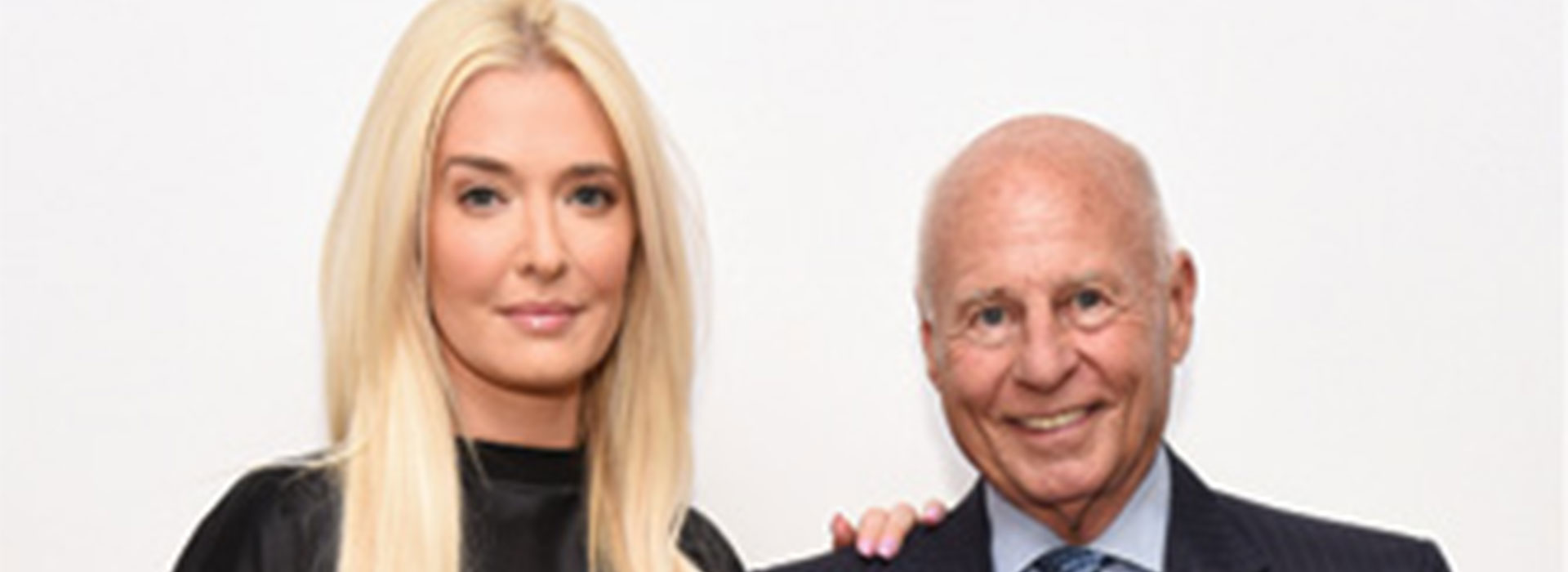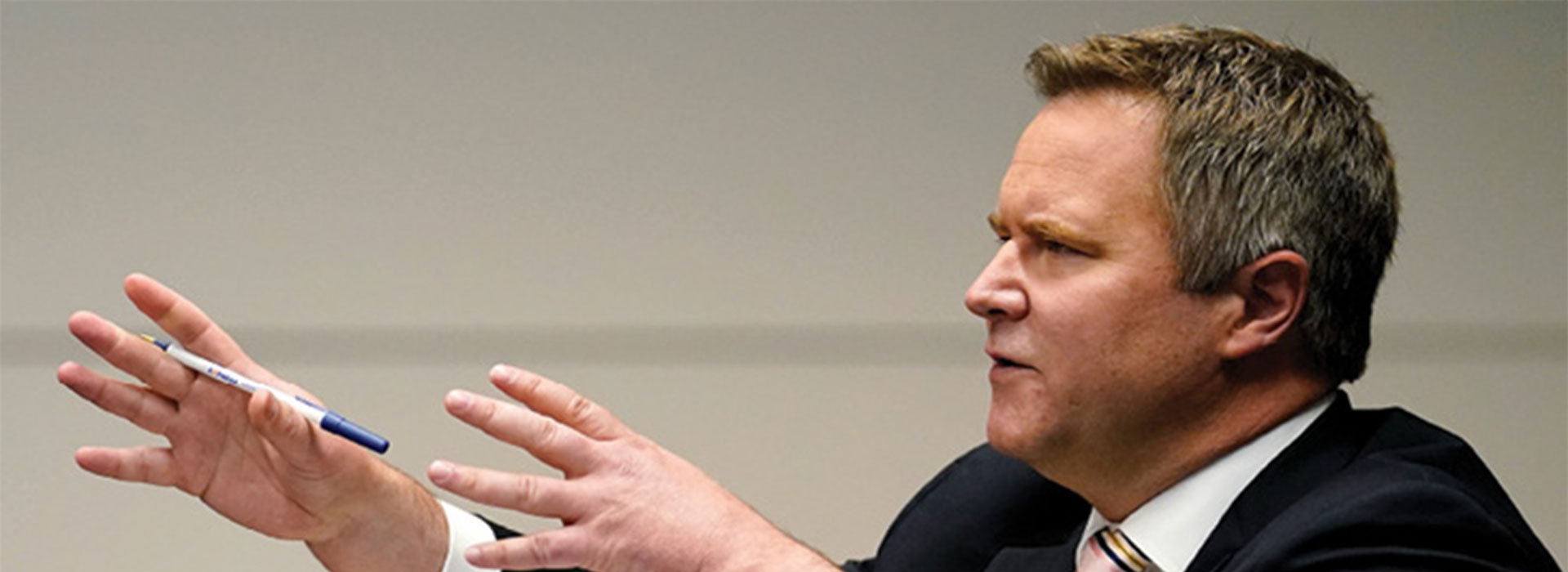
Do you want to fight for your clients but are short on cash? Call litigation finance groups today and get $500,000 or significantly more!
But not if you have public discipline, bad credit, too much debt or a dog case. Or if the other side is known for slash-and-burn legal tactics. Or if it looks like your case won’t bring in enough damages to satisfy the client after the funder gets paid.
The caution is understandable. The loans are nonrecourse, so if the case or cases go south or the attorney breaks the agreement, the funder loses its investment.
But if the litigation is successful, the return on investment could be between 200% and 400%, lawyers interviewed by the ABA Journal say.
Interest in litigation finance has grown in the past few years. The pandemic shut down many court matters in 2020, which meant some lawyers in private practice earned less. Additionally, wealthy investors faced various unusual circumstances–not just the COVID-19 crisis but also a nation sharply divided over the 2020 presidential election, and both made the stock market unpredictable.
In addition, litigation finance is attractive as a high-risk investment because of the certainty that one side will come out on top, and the variables for the most part are limited to counsel, evidence, judges and juries.
Some lawyers who review proposed litigation finance deals say they are busier than ever, with hedge funds and wealth managers looking for cases to fund. And commercial litigators report an uptick in solicitation calls from funders seeking investment opportunities.

“Law firms that maybe two years ago would not have been inclined to look for litigation financing are now open to litigation financing,” says Alan Zimmerman, who founded the Law Finance Group. He started his business, then called Judgment Purchase Corp., in 1994. He says it’s provided more than $750 million in funding to cases, and there’s no limit on investment size.
But there are a handful of recent stories about high-profile lawyers defaulting on millions. Funders such as Lee Drucker, co-founder of the venture capital firm Lake Whillans Capital Partners, say careful review can prevent financial losses, but there are also “plenty of scumbags.”
Additionally, “Our due diligence is making sure you get in bed with the right partner. We are getting in bed with pretty sophisticated people who are used to doing business,” Drucker says. His business might select one case out of hundreds to fund. The average amount it invests is between $5 million and $6 million, but it could go as high as $15 million.
At one point, litigation finance was centered on consumer contingency-work cases. Now, some financing groups fund only commercial litigation. That business model started in Australia and the United Kingdom in the mid-1990s, and it entered the United States in the mid-2000s. (See “Other People’s Money,” December 2018, page 54.)
Some financiers see commercial litigation as less risky than consumer law. “A lot of these people that just do plaintiff work are interesting individuals. I wouldn’t want to loan money to a guy who has a bunch of billboards,” says Amy Ganci, a Dallas-area lawyer who represents litigation funders.
On the investor side, interest in litigation funding grew during the Great Recession, according to Suneal Bedi, an assistant professor at the Indiana University Kelley School of Business. Hedge fund managers wanted new high-risk investments that could diversify a portfolio and weren’t associated with real estate, he says.
"It's just another way to share the risk." —Matthew Rizzolo, intellectual property attorney
At the same time, clients were demanding lower legal bills, which softened some commercial litigators on the idea of getting litigation financing, says Bedi, a former Ropes & Gray associate who did corporate private equity work. “If you look at the law side, there’s still a little bit of disagreement on whether this is a good thing or not. But if you look at the business side, they’re all really excited about it,” he adds.
Law firms outside of the Am Law 50 as well as larger firms in smaller cities are starting to seriously consider litigation finance, according to Bedi. Areas of investor interest include contractual claims, because it’s easy to estimate damages based on evidence, and intellectual property lawsuits, which can have significant damages, he says.
“It’s just another way to share the risk,” says Matthew Rizzolo, a Washington, D.C., intellectual property partner at Ropes & Gray. He says there’s been a significant increase in litigation funding with patent clients.
“If you are a general counsel and are getting pressure from your CEO about your legal budget, but you have an IP claim you think is valuable, then you think, ‘Maybe I can use this,’” Rizzolo says.
Michael Kelley, a partner at Parker Poe in Washington, D.C., advises parties on litigation funding contracts. Most of his work relates to commercial litigation, and his clients include Am Law 100 firms, sole practitioners, investment banks and high- net-worth individuals. The risk that a lawsuit might go south makes some investors nervous, he acknowledges, but portfolio financing, in which a funder invests in various cases at one law firm, can mitigate the risk.
Lawyers not paying back what they owe is another concern. Increasingly, Kelley sees contracts requiring deposit account control agreements with financial institutions, which give the funder control. That’s a way to avoid “strategic behavior” of the party and its attorney not paying the funder back, according to Kelley. He also sees agreements in which the funder gets “springing” control of an account tied to certain events, such as payment defaults or financial illiquidity of the funded party.
"There are all kinds of issues regarding client confidentiality, fee-splitting and conflicts between lawyers and their business interests." —Katherine Toomey.
In August 2020, the ABA House of Delegates adopted a resolution that established best practices for litigation funding. Without taking a position on the issue, the guidance recommended lawyers who engage in litigation funding detail the arrangement–including its nonrecourse piece–to clients in writing, and ensure the client maintains control of the case.
Many agreements include language that lets the funder terminate funding in the event of an adverse incident, such as losing part of a summary judgment motion, says Katherine Toomey, a partner with Lewis Baach Kaufmann Middlemiss. The Washington, D.C.-based commercial litigator advises clients who are considering litigation funding, and she thinks financing a portfolio of cases may raise ethical concerns.
“There are all kinds of issues regarding client confidentiality, fee-splitting and conflicts between lawyers and their business interests,” Toomey says.
Ryan Baker, a Los Angeles commercial litigator, has had more than 10 “substantial conversations” with litigation funders and entered into one agreement. For the other matters, Baker says the cases often didn’t fit what the funder wanted in terms of potential damages. Or his client objected to the size of the funder’s return on investment.
He finds that difficult, too. “It’s not that the funder is calling you all the time, saying, ‘What’s going on now?’ It’s that there’s a pie, and at the end of the day, a portion of that pie will go back to the funder,” says Baker, who estimates that funders usually want a three-times return on investment.
Others see litigation funding as a good business strategy. Some lawyers get it even if they could cover case costs themselves because it allows them to take on more lawsuits, says August Matteis, a Washington, D.C., litigator. A partner with Weisbrod Matteis & Copley who uses litigation funding, Matteis says funders have asked his firm to come in as co-counsel when they don’t know the reputations of the lawyers applying for funding. Also, Matteis says he is occasionally asked by funders what he thinks of other lawyers’ reputations.
Lawyers can get in over their heads with litigation financing, Matteis says, but that’s true with contingency work, too. “It’s all just math and the numbers. How long will the case take, and what is your burn rate along the way?”

In some litigation funding agreements, it appears the burn rates grew into infernos. Tom Girardi and John Pierce, two Los Angeles litigators who both recently have been accused of unethical behavior, also defaulted on millions in litigation funding, according to court records.
Girardi is an 82-year-old plaintiffs lawyer who until recently was mostly known for big wins, including a $90 million personal injury class action settlement with Shell Oil in 2015, and the NFL concussion lawsuit, potentially worth $1 billion, in which he represented 500 former players.
He also found fame through his wife, a cast member on Bravo TV’s Real Housewives of Beverly Hills. She is a singer whose stage name is Erika Jayne, and her work includes the dance song “XXpen$ive.” She said on The Wendy Williams Show in 2018 that she was spending $40,000 a month on hair, makeup and clothes.
She filed for divorce from her husband in November 2020. The following month, he was hit with a lawsuit alleging he embezzled settlement funds from clients whose families died in a 2018 airplane crash. The action was filed in the U.S. District Court for the Northern District of Illinois, and she is also named as a defendant, based on allegations that the divorce filing is a sham and that she has both a legal and financial interest in the victims’ settlement funds. The action cites a sworn declaration from Zimmerman, who in a separate action sued Girardi and claimed the plaintiffs attorney used his law firm, Girardi Keese, to “loan” more than $20 million to his wife’s company, EJ Global.
Zimmerman’s business was not a defendant in the Illinois federal court action. But two other funders that entered into agreements with Girardi Keese, California Attorney Lending II and Stillwell Madison, were. The plaintiff later filed stipulation notices to dismiss both funders from the suit a few weeks later, after it was determined neither received any money earmarked for the airplane crash trust account.

Girardi’s creditors forced him and his firm into involuntary bankruptcy. California Attorney Lending II and Stillwell Madison as well as other funders are listed as creditors. Both Stillwell Madison and Law Finance Group also filed lawsuits against Girardi in 2019 claiming they were not paid back what they were owed.
In January 2021, Girardi’s brother filed a motion, which was granted, asking that he be appointed as the attorney’s conservator on the basis that his sibling didn’t understand what was going on with the bankruptcy and was incapable of making rational financial decisions. Robert Baker, Girardi’s lawyer, responded “No thanks” to an ABA Journal request for comment. In January 2022, the California State Bar Court recommended disbarment for Girardi.
Pierce, a lawyer who has taken out significant litigation funding for civil matters, mostly involving intellectual property, is listed as defense counsel for many people charged in the January 2021 Capitol riots. He also briefly represented Kyle Rittenhouse, who was acquitted in November of killing two men at a 2020 Black Lives Matter demonstration in Wisconsin.
His law firm, Pierce Bainbridge, owes litigation funder Virage SPV “not less than $59 million,” according to a 2021 New York state court filing. The motion was a cross-petition to intervene on a filing made by other Pierce creditors involved in litigation finance seeking to enforce a default arbitration award of approximately $3.5 million. The court granted that motion but denied the motion from Virage, which is also a creditor in Girardi’s bankruptcy.
In an August pleading for a Capitol riot defendant, federal prosecutors accused Pierce of being out of contact with the court for a week and sending in his place an employee of his firm who was not licensed to practice law. The motion also claims the government had heard “conflicting information” about Pierce’s health and whereabouts.
Neither Pierce nor Virage responded to ABA Journal interview requests.

Litigation finance agreements for significantly smaller amounts can also lead to infernos. Justin Randolph, a Chicago lawyer whose work centers on representing federal employees and law enforcement in federal complaints, says he received $100,000 in litigation funding on a portfolio of cases from Pravati SPV II in 2017. By late 2019, Pravati obtained an arbitration award against Randolph for $248,651 after Randolph entered default status under the agreement’s terms. The amount included interest, tort damages (which were later vacated) and other relief provided in the agreement. Andrew Williams, a Florida lawyer who in 2018 obtained litigation funding from Pravati Credit Fund III, is also a plaintiff.
Pravati sought to enforce the award personally against Randolph and his spouse, causing Randolph to then file an anti-racketeering lawsuit against Pravati and several of its affiliates, individual officers and employees in the U.S. District Court for the District of Arizona. In his complaint, Randolph stated that Pravati’s and the other named defendants’ “putative aim is to provide legal funding to law firms… [but their] actual aim is to gain access to property and assets of borrowers through fraud and usury.”
To illustrate his point, Randolph accused Pravati of using named defendant and the company’s director of legal investments Hoyt Neal to add a layer of respectability and legitimacy to its transactions. According to the lawsuit, Neal was described by Pravati as a former large firm partner who did commercial litigation and served on the Arizona Superior Court as a judge pro tempore; however, the complaint states, “Neal is not a judge pro tempore for the Arizona Superior Court.” Neal had practiced with Wood, Smith, Henning & Berman but was terminated in 2016, according to the lawsuit. He was suspended from practice the following year after it was found he had engaged in fraudulent billing practices. Neal was reinstated in November with probation status, according to the State Bar of Arizona website.
Pravati also engaged in litigation funding with Pierce’s law firm, then known as Pierce Sergenian, in 2017, according to a news release.
The court granted Pravati’s motion to dismiss Randolph’s case in December on the basis that the parties entered agreements that included mandatory arbitration clauses for all potential disputes, including whether a dispute is arbitrable. “As lawyers and law firms, plaintiffs are capable of independently understanding and intending the implications of their agreements, including that the [American Arbitration Association] rules leave arbitrability to the arbitrator,” the court wrote.
Randolph did not make himself available for an interview with the ABA Journal, and Pravati did not respond to an interview request. In its motion to dismiss, Pravati argued the lawsuit was an attack on arbitration proceedings. The filing described Randolph’s case as a way to stall collection efforts, embarrass the business and pressure it to settle. It also states that as of June 2021, Randolph owed Pravati more than $250,000.

“I have a ton of cases where there’s bad liability for the plaintiff. I think the litigation finance company either is willing to take the risk because they know that some companies just settle regardless, or they are not getting full and complete information from the attorney,” says Melody Kiella, a partner with Drew Eckl & Farnham in Atlanta.
Others say that’s unlikely, given the money a funder can lose if a funded case is unsuccessful. Also, Law Finance Group’s Zimmerman disputes the notion that litigation funding encourages lawyers to take a case to trial. “Two good things happen when a lawyer settles a case: You get paid sooner, and you eliminate the risk of losing,” he says, adding that if the parties appear to be making progress toward a settlement but the numbers don’t make sense for the plaintiff’s lawyer based on what he or she will owe Law Finance Group, the business may consider reducing the amount it’s owed. “We don’t control the cases, ever,” Zimmerman says. “If a law firm wants to settle a case, we never want to be an impediment to settling a case. You never want to own such a big percentage of a case that it will have an impact on settling the case.”
He describes litigation finance as a difficult business. According to filings in Law Finance Group’s $15 million action against Girardi Keese in 2019, the parties entered into three agreements between November 2015 and March 2016 for up to $12 million. Collateral on the deal was various lawsuits brought by Girardi Keese, including NFL concussion litigation, hip-replacement implant actions and cases involving Porter Ranch, a Los Angeles County neighborhood that had a massive natural gas leak in 2015. Girardi received proceeds from lawsuits listed as collateral in the loan agreement but failed to pay Law Finance Group any of the money received, according to the lawsuit. Zimmerman says they collected a judgment of approximately $16 million from Girardi in July 2019.
Stillwell Madison alleged in its 2019 U.S. District Court for the District of Arizona lawsuit against Girardi for breach of contract and fraud that it had an agreement to loan the defendants $5.1 million in 2016, and it entered into a forbearance agreement in August 2018. Unbeknownst to Stillwell Madison, Girardi and his law firm had entered into a similar agreement with Law Finance Group weeks earlier, according to the lawsuit, which is pending.
Zimmerman’s business started loaning money to Girardi Keese in 2014. “Sometimes do we make mistakes? Sure, look at Mr. Girardi. But it happens rarely if you are careful,” Zimmerman says.